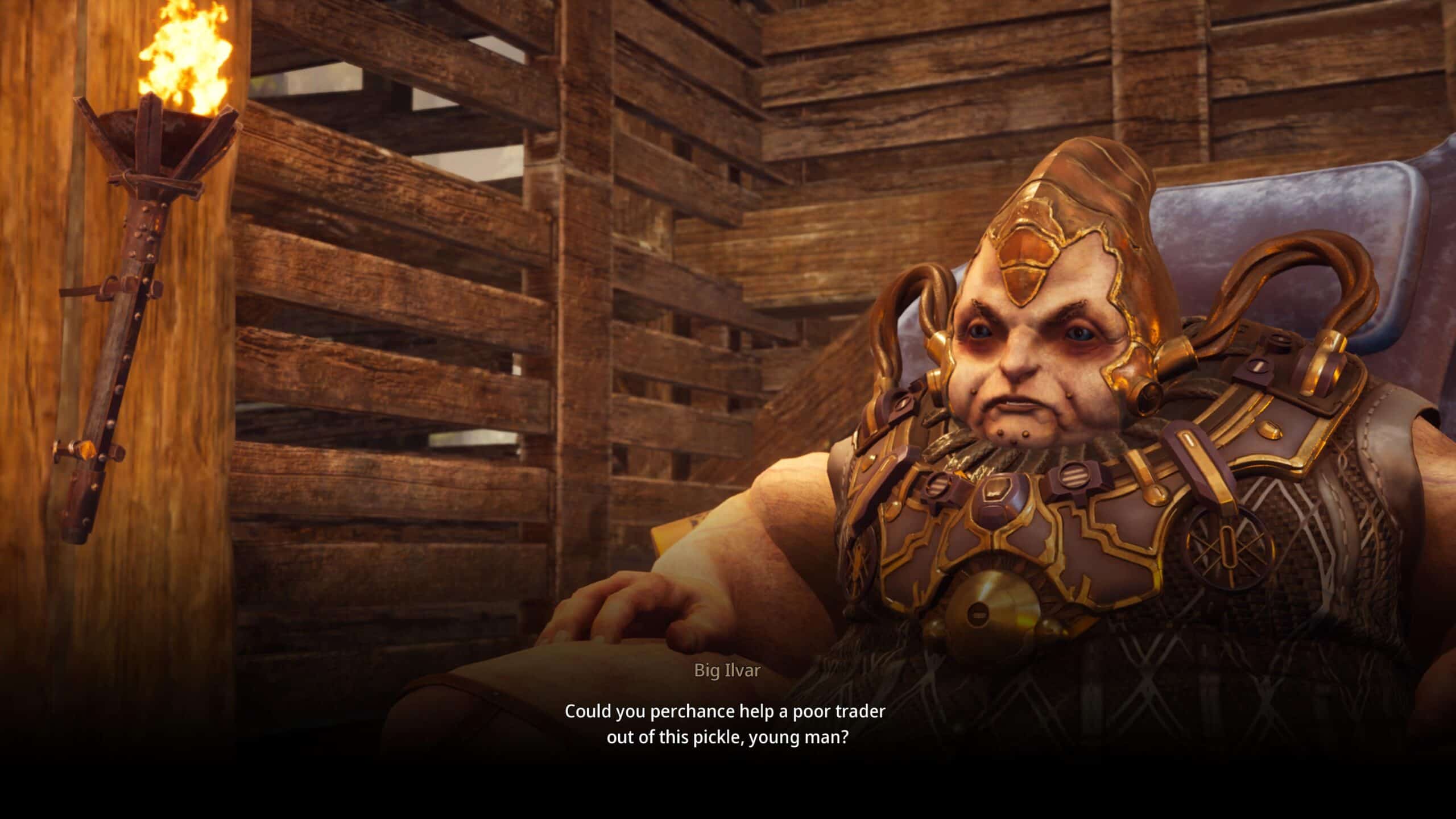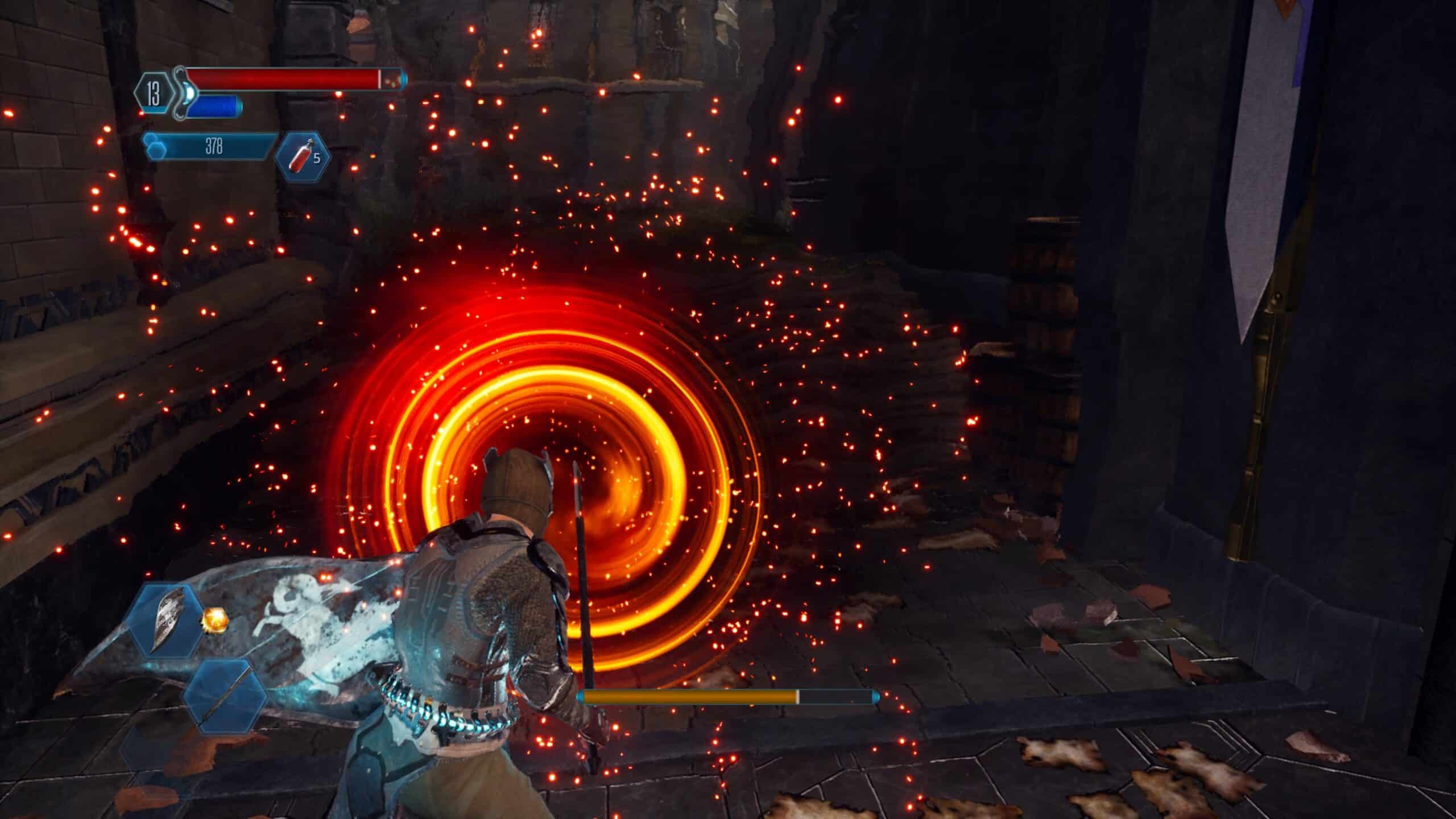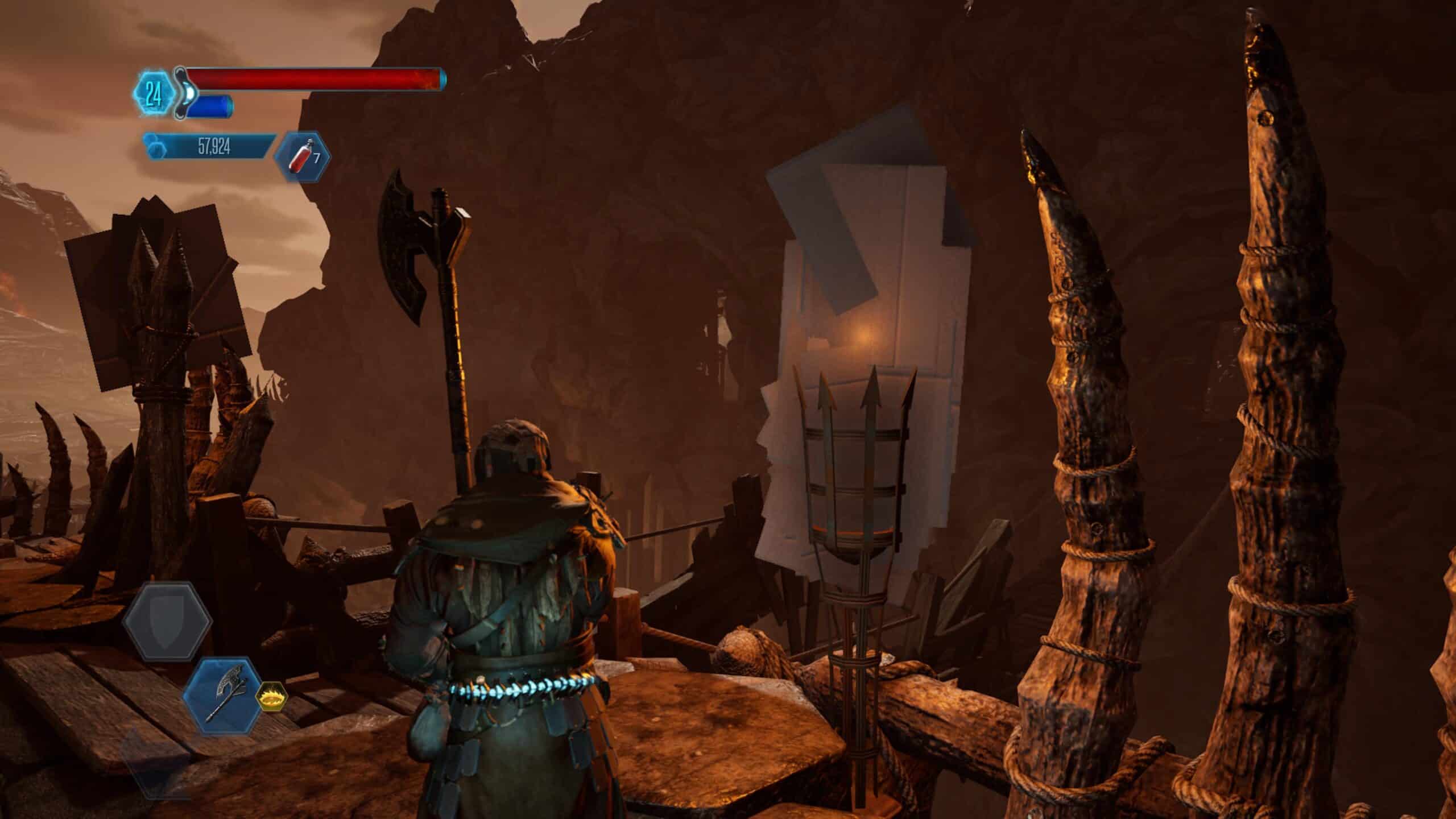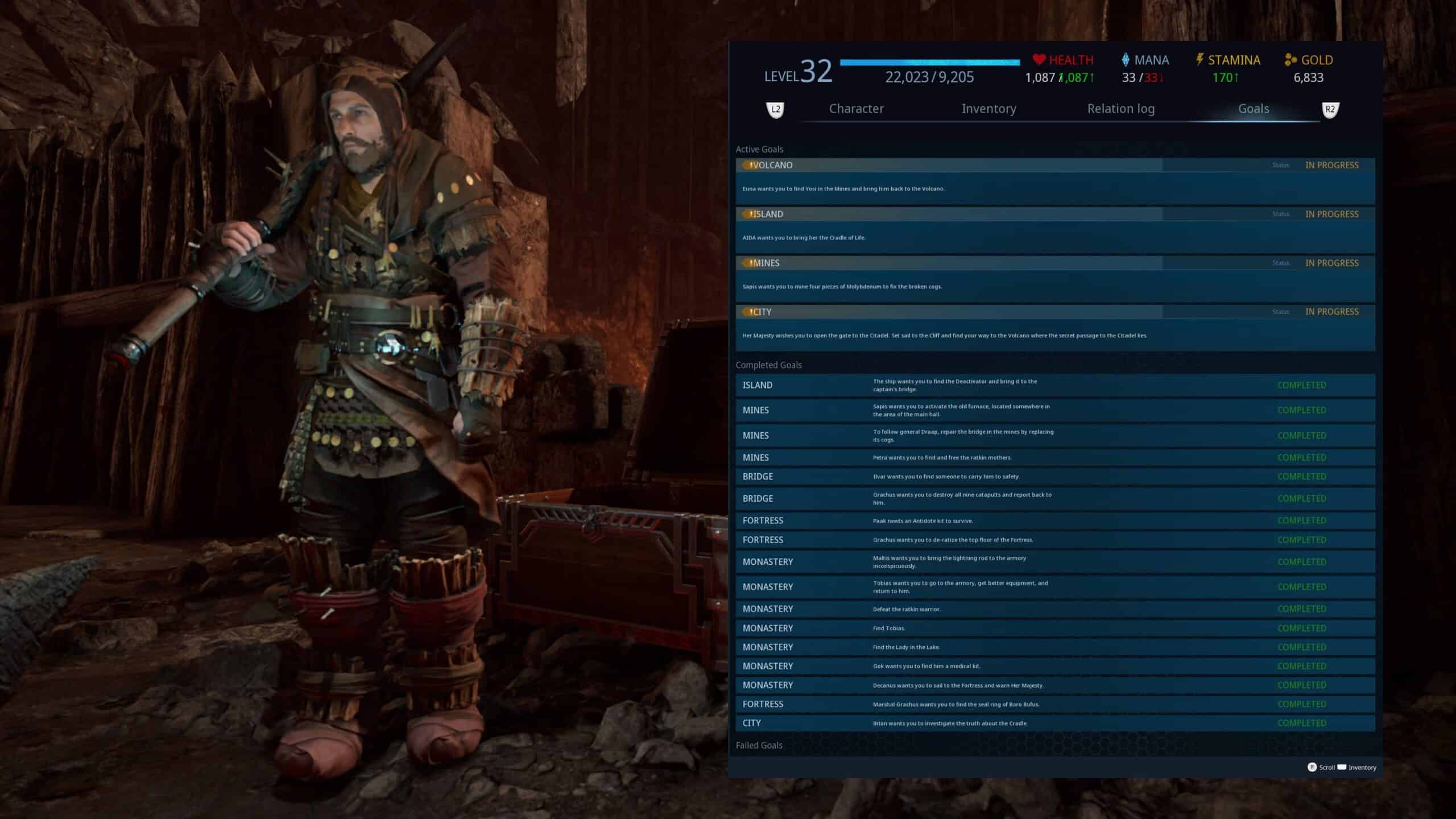- Granblue Fantasy: Relink Review – Flawless Like the Sky - February 2, 2024
- Dragon Quest Monsters: The Dark Prince All Mini Medals Location - December 22, 2023
- Dragon Quest Monsters: The Dark Prince Review – For Diehard Fans Only - December 20, 2023
I am not an advocate of truth, and I don’t know the ins and outs of the games industry. But I believe that many games with smaller budgets, such as indies or AA, need to bet on an innovation factor to win the public since they often cannot rely on cinematic scenes or hire a world-renowned professional.
The Last Oricru, an AA, tries to mix formulas used in other genres to create its own, a sort of story-driven Soulslike. This is not exclusive to the Soulsborne, but lore and narrative are usually scattered on items and dialogue, and must be patched together if you want to know their narrative full context.
The question is, did this new IP succeed in this amalgamation, or did it fail? Check out my The Last Oricru review and see what to expect from this game.
The Player Decides Every Outcome
The story of The Last Oricru is paved in secrecy and mystery. Using a formula of an inquisitive opening cutscene, an amnesiac protagonist, and intriguing flashbacks, we embark on a journey alongside our hero in search of discovery and answers. The world of Wardenia has a fantastical setting with some doses of hi-tech technology scattered throughout it to further add to its obscurity.
On this journey, I got to meet some remarkable and charismatic characters from different races and three other humans. At first, I was not very fond of Silver, our immortal protagonist. His squeaky voice and bottomless quipping attempts were annoying. But he grew on me.

One thing that quickly caught my attention was how the game tried to embed gameplay characteristics into the plot. Are you familiar with the term ludonarrative dissonance? The dissonance occurs when there is a conflict between the narrative in the plot and the gameplay. For instance, Nathan Drake in Uncharted is a comedic teddy bear in cutscenes but has no trouble committing mass murder throughout the game.
In The Last Oricru, the protagonist’s immortality explains why he can repeatedly die and still succeed in the campaign. During quest negotiations, Silver’s inability to perish is often mentioned as the sole reason for his inclusion in the battle. After all, if he dies, he just has to try again. I don’t think all games should tackle the nuances of a game over and retry, but GoldKnights managed to intertwine it into the narrative creatively.
It doesn’t mean that the game does not suffer from this dissonance. Despite destroying a city filled with members of a specific race, the plot tempted me to switch sides and join them. If I wanted to, we would become allies and bygones would be bygones way too fast.
As I progressed through the story, discovering more about the unique motives of each race and its individuals, the game lived up to its player choices feature. One moment, I favored a character from the Ratkins race and wanted to protect all their civilization. On the contrary, I learned the motive behind the war and became distrustful of everyone else.
It is a well-designed gray area with no right and wrong, only moral choices based on the player’s virtues and values. Is stealing food punishable by execution? This and other decisions will shape your character’s path, which may or may not be just that, a character, or a reflection of the player’s personality.
In my first playthrough, I tried to make choices that were true to myself, diving head-first into the consequences. My ingenuity often got me into undesired situations, and I wanted to turn back and change my decision. But if I did that – something the game doesn’t allow by traditional means, only by save-scumming – I would be jeopardizing my experience, so I stood my ground until the end. Even after my actions led to the genocide of an entire race. But what’s a little bit of mass genocide between friends, eh?

The game also relies on wit and humorous dialogue. It doesn’t necessarily mean that you will burst out laughing after each exchange, but I must say that in several moments I was amused by some of the absurdities usually found in RPG tropes. The constancy with which they try to do something funny can become slightly annoying, but as my grandfather used to say, only he who throws the ball can score a point.
As a fan of JRPGs, a subgenre that has a strictly linear narrative, I confess that non-linear games intimidate me a bit. One of the first quests in Last Oricru asked me to sneak a weapon and hide it from the queen. Initially, her guards caught me, and I failed the mission. My failure made me lose relationship points with the Naboru, and I received a cold shoulder from their queen.
I started a new game because I was curious about the other outcome. This time, I managed to get the weapon and hide it. There was a much better relationship with the queen, I didn’t lose points, and I had the option of telling the truth about the hidden weapon.
To be honest, I thought that, eventually, both scenarios would lead me to a common path, the main quest. Somehow, they did lead to the same place. However, based on my previous choices, I would fight on one of two sides of the war. During my original playthrough, I joined the Naboru against the Ratkins. On the other, I was on the Ratkins’ side facing the Naboru. Seeing that my decisions mattered right from the start was an appealing experience. Granted, I would need to play the whole game again to learn the other side of the story. But for those who like replayability, The Last Oricru delivers with aplomb.
However, there is a caveat. The game progression features many decisive strands that impact the main scenario. Silver, our nagging protagonist, is usually in the middle of them. But his blasé demeanor in the face of everything that was going on didn’t help me care about anyone. In addition, the constant possibility of changing sides in the war also lessened the impact of my decisions, as if I could erase all my err choices. Ultimately, they all lead to uncovering humans’ past, which is the smallest part of the plot.

Moreover, the narrative portrays all noteworthy characters as having a second agenda, as if to sow doubt about my decisions without providing a basis. There are so many betrayals and political intrigues involved in one world that George R. R. Martin would be jealous.
To add to the lore, there are some Captain’s Logs at every save point terminal, which share some tidbits about the humans’ mission. It was the cryptic nature of these messages that made me suspicious of a particular race as well as my character’s true mission.
Oddly, at one point in the game, one of these Captain’s Logs was incredibly lengthy and revealed the truth surrounding the humans and their seemingly anachronic Space Ship. Rather than reading all the other logs, I could have read only this one, which provided me with all the answers.
A Soulslike Like Any Other
The Last Oricru has some Soulslike elements in the combat and the character progression. There are a variety of weapons, each with its peculiarity, including shields and magic artifacts that allow you to cast spells. In battle, expect the notorious stamina bar. With each enemy killed, you accumulate experience, called essence. If you die, you lose it all, and to recover the essence, you must go to the place of your death.
To level up, you use a technological apparatus to distribute your experience points on the desired attributes. Since I like to use spears and a little support magic, I usually opted for higher Dexterity and some Will. But when I noticed heavy arms staggered my enemies at each blow, I shifted to Strength.
Battle gameplay, however, is where the game falls short of its peers. It looks like it wanted to have the straightforwardness but delightful simplicity of Dark Souls but took the wrong turn and fell into the Lords of the Fallen domain. Even though the game calls it a chain, there are no combos. Most weapons have a light and heavy attack and a variant if you attack sprinting, jumping, or after evading.

These moves depend on the type of weapon. In other words, each sword or polearm will have a very similar and limited skillset. Some rare weapons have skills ranging from a circular area attack to giving elemental properties. Interestingly, shields have the most unique abilities. One of them attracted all arrows fired, sticking them in a magnetic field and bouncing them back to the enemy archers. Another was a reflector of magic if the input was well-timed.
The most significant variation in combat comes from Magical Artifacts, which, as the name implies, are needed to conjure spells. My primary offensive weapon was equipped in one set, and my support magic was prepared in the other when I needed to top up my HP. While this dynamic added depth to the gameplay, it didn’t make it any less bland since it was nothing revolutionary to the genre.
And like all good Soulslike, exploration is king. It’s so satisfying and rewarding to explore every corner of a map in search of items, equipment, and sidequest objectives. You shouldn’t expect a minimap to indicate the next goal in a quest. So if you want to complete all the extra content, you must explore all regions constantly.
Weapons and armor have a quality level. So no matter how often enemies drop the same equipment, there is a chance it will be of poor, standard, or superior quality, which is a freshen-up and encourages us to murder our opponents repeatedly in search of better gear.
Various pieces of equipment are part of a set. When you equip all the items belonging to it, you get bonuses such as more HP, damage, life steal, and other perks. I constantly weighed whether it was worth equipping a helmet with more defense in favor of the set bonuses. Not to mention that using equipment from the same set also contributes to gaining points on the Fashion Souls catwalk.
The battle is what you expect from a Soulslike game. Learn the enemy attack pattern, dodge, and deliver a mighty thrashing. Most bosses weren’t challenging, mainly because the developers must have underestimated the Life Steal attribute, which made my life absurdly easier.
Notice how my life steal damage overpowers the boss’ damage. I used this weapon for the entire game.
I don’t know if my lack of attributes in Will or Intelligence influenced my magical defense. However, enemies’ magic attacks hit me like a bull, frequently killing me with just one spell.
Facing two or more enemies is absurdly tricky and a bit unbalanced. You lose stamina when you take damage, and there is no invincibility frame when to give some room. Sometimes I would get stunlocked and could not roll to safety because I was out of stamina, and the constant smacking didn’t let my gauge recover, so I just waited for my death.
The standard difficulty mode is called Dark Difficulty. If you want a less challenging experience, go into the settings and switch to Story Difficulty. As I understand it, the damage done increases by 50%, and the damage received decreases by the same amount.
There are a few minor bugs now and then. Sometimes I picked up some items on the ground, and the game did not give me a tooltip telling me which item it was. I saw monsters stuck inside a wall, trying to surprise me with their rookie Ninjutsu skills. If I skipped a dialog, sometimes the voiceover would overlap in the next cutscene. (I swear I skipped it only because it was a repeated scene.)

The game presents a Relation system. By choosing which race to aid or harm, your relationship with it will change for the better or worse. Right off the bat, a tutorial warned me that some quests would have me choose which race I would favor, amplifying this narrative-driven feature of Last Oricru.
Finally, there is a multiplayer mode. You can play online, but only with a friend. No strangers are allowed. The Last Oricru also has a split-screen mode, something practically extinct nowadays outside of Nintendo games. However, since I do not have a second controller or a friend to play with, I could not test this feature.
A Next-Gen Exclusive Game with Old-Gen Graphics
The Last Oricru is only available for next-generation consoles, PlayStation 5, Xbox Series, and PC. The game’s graphics are not sloppy, but it is not a cinematic experience either, which puzzles me as to their decision not to bring the game to previous platforms. The scenarios are extensive and fully rendered but don’t expect to use a photography mode to share the landscape as you would in Red Dead Redemption 2.

Almost every text has a voice-over that does its job well, although I was not too fond of the scrawny voice of the protagonist. It reminded me of a teenager being lectured by his parents and being apologetic in a high-pitched tone. There was no epic soundtrack that caught my attention. While they are appropriate for the environments, whether a dark, damp mine or an abandoned spaceship, they are rather ordinary, which is a shame because I love filling my Video Game Epic Motivational Songs playlist on Spotify with discoveries.
The UI Needs Some Work
The game features a crafting and weapon upgrade system. We can use the materials collected from demolishing vases, chairs, and crates or by disassembling old equipment to upgrade our gear up to three times. Some NPCs offer a barter option, allowing you to exchange some items for materials and equipment. The only legendary ones I saw required three pieces of shards – one of which I sold for gold early in the game.
Since the inventory had no sorting system, I soon found myself lost in a sea of old and repeated equipment. It was tricky to know if they would be helpful to me in the long run, to find a high-damage weapon whose requirements I previously didn’t meet or a piece of a set. Since there were no slots or weight limits in my inventory, I became a massive hoarder. Then, my laziness overpowered my desire to disassemble them for materials or sell them for gold and I just let it be. I just wanted to sort my weapons by damage or by rarity.
By the way, here’s a hint. You can equip a second ring and weapon set on the Character page of the menu. You need to click on the slot for the respective equipment and choose one. I tried to equip the second set of weapons from the inventory menu itself and could not. It took me almost 10 hours to figure this out, and the game was not necessarily intuitive in teaching me.

And wow, the quest log page. The more quests I took, the smaller the font got. It got so small that I couldn’t read my next objective. Why not put a toggle feature to hide completed quests? It would definitely tidy up the menu.
Alternatives
The Last Oricru combines Souls-like gameplay with a narrative-driven journey based on your choices in a dark fantasy setting with some sci-fi elements. The mix is a bit unusual, so I can’t point to something quite like it. However, if you want similar gameplay or an adventure where your choices matter, I suggest checking out one of these alternatives.
- Witcher 3
- Dark Souls
- Bloodborne
- The Elder Scrolls V: Skyrim
FAQs
Question: Is The Last Oricru a new IP?
Answer: Yes. It was developed by GoldKnights, a studio based in Czechia. The game was initially called LostHero but was renamed to The Last Oricru. They describe the game as a dark fantasy Action RPG inspired by Dark Souls.
Question: Does The Last Oricru has several endings?
Answer: Yes, it does. Your choices define all major events in Wardenia. These range from determining who will win the war to exploring the whole truth about humans at the end. The game’s replay factor is enormous if you want to discover all the narrative nuances of The Last Oricru.
Question: Is The Last Oricru hard?
Answer: As every Souls player says, it’s not hard, it’s punishing. However, some weapons attributes make the task easier, such as life steal. Also, if you have difficulties, you can activate Story Mode and facilitate the challenges a bit. Still, expect to die more than in your average Action RPG.
Verdict
Score: 6.5/10
One of my constant complaints about Soulsborne is how scattered the game’s lores are. I know that the universe and settings that govern Miyazaki’s games are phenomenal, which makes it all the more bittersweet. I wish the story were handed to me on a platter, and not that I needed to frequent wikis and discussion forums to capture the lore fragments and put them together into a concise narrative.
With The Last Oricru having done this for me, including a plot- and text-driven element in a Soulslike environment was quite intriguing. In fact, it was the biggest highlight of the game. Perhaps GoldKnights focused so much on the narrative that it didn’t pay much attention to the gameplay, which becomes ordinary quickly. Still, what motivated me to keep playing was learning the outcome of my actions. This is because, until a certain point, it felt like I was only making things ugly and writing history with the villain’s pen. This, by the way, is the charm of electronic RPGs, especially CRPGs and WRPGs.
Did I wish I had activated Story mode to jump right into a brand-new dungeon without being afraid of dying to stunlocks? Yes, but I think my review would be slightly tainted if I chose to do so. Nevertheless, I enjoyed playing The Last Oricru, and I will even consider trying other storylines, testing out my choices, and hunting for trophies here and there.
Keep in mind there are no New Game+ or carrying over your progress. So as soon as you do something, it’s forever stuck in your playthrough. Once I finished the game, it showed me a summary of what happened to some prominent characters. Looking at it, I can’t really say I was proud of myself and some of my decisions.
Pros & Cons
Pros
- Your decisions create your journey;
- Some quips are funny and made me giggle;
- Massive replayability with multiple narrative choices and character builds;
- The consequences are intriguing and make you want to see the other side of the story.
Cons
- Combat gets tedious quickly;
- The inventory is a ludicrous mess;
- Innovation is attempted in some boss fights, but it backfires;
- For the sake of keeping the protagonist on his main quest, some narrative outcomes are far-fetched.
Playlog

My first complete playthrough lasted 17 hours. For an RPG, this is not particularly lengthy, but considering the numerous variables and replayability of the game, the clock can run longer. My choices made me an ally of the Naboru, an enemy of the Ratkins, and the sole annihilator of the third race. I may have put the crown on the wrong head and let precious allies die, but no use crying over spilled milk.
Looking for more interesting readings? Check out:

